

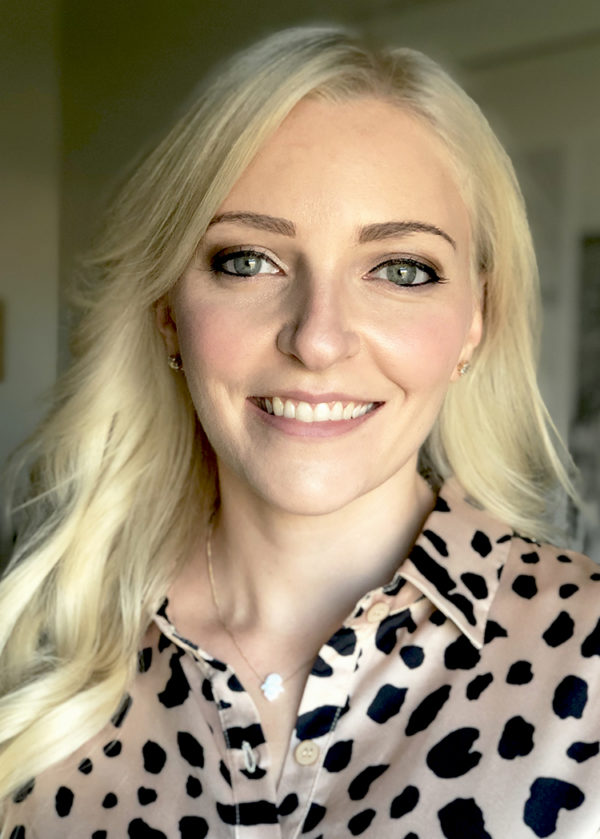 Lauren Bertrando is the Senior Director of Design and Merchandising at Delta Galil USA, working with brands like Splendid, Magnolia loungewear for Joanna Gaines, Tommy Hilfiger, Nearly Nude, Spalding, and more.
Lauren Bertrando is the Senior Director of Design and Merchandising at Delta Galil USA, working with brands like Splendid, Magnolia loungewear for Joanna Gaines, Tommy Hilfiger, Nearly Nude, Spalding, and more.
She is an accomplished and versatile creative design leader specializing in design management and brand building, with a demonstrated history creating successful fashion collections from concept inception to execution.
Formerly the Director Of Design, Bar III and Maison Jules RTW at Macy’s, Lauren is skilled in fostering innovation while ensuring brand cohesiveness, lifestyle identity and quality.
Not only is she adept at setting a clear vision that drives business and capitalizes on new opportunities, but Lauren also supplies and retains top-tier talent in the design industry with dynamic employee engagement and team building.
How did you become the Senior Director of Design and Merchandising at Delta Galil?
Lauren Bertrando: Well, it’s been a long road. Obviously, I went to school for fashion design. I would say probably I had no idea really what I was getting myself into at the moment. But I was always someone who was really interested in anything creative, drawing, painting, what have you. I really did not have a lot of experience in designing clothing. I could not sew, which became a real detriment over time, but I did end up picking it up.
I certainly come from a family of people who were not super creative, so they let me go on my way and figure it out over time. I started my career really at Macy’s, like you mentioned. I actually started in men’s knits and sweaters, which was not an area that I had any interest in or knew anything about. But Macy’s is really great about training young talent and helping them understand the business side of things, because I think when you’re in design school, the world is your oyster, you can make anything you can think of.
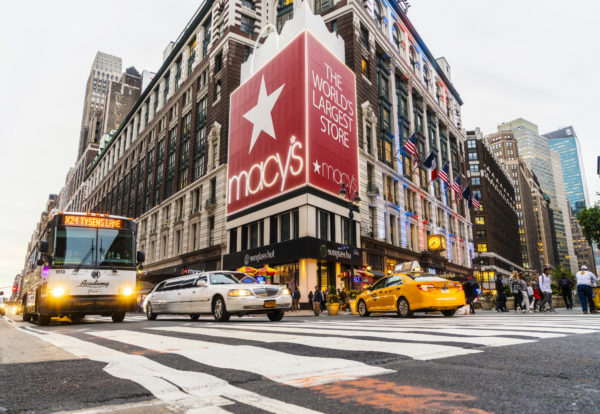
That’s really not realistic when you’re running a business. So they were really good about that balance. And then I ended up moving into intimate apparel for a couple years, and then, finally, being in Bar III and Maison Jules, which were ready-to-wear brands for Macy’s and they were both… Had different aesthetics. So it was nice being able to design things that were totally different from one another.
Then, actually, my former boss who managed me in intimate apparel was actually in the role that I am in now and she was retiring. She reached out to me and said, “I think this could be a really great opportunity for you. It feels like something that would be great with your skillset.” And here I am.
Steve Cunningham: That’s so great how that comes back around to someone you were working for before.
Lauren Bertrando: Yeah. I mean, I think that was a real learning experience for me over time. I think now today’s designers, first of all, more tech savvy. You have a lot more outreach. You have social media. You have LinkedIn. You have ways of staying in touch with people. But back in the day, you faded away from people over time. If they didn’t leave their personal email when they left a job, you maybe never talked to them again, even though our industry is quite small.
But now there’s all these ways of keeping connected with people. I think it really helps you over time when you’re looking for new opportunities, that you have all these people that you’re linked to and can reach out to. So it’s really great.
Steve Cunningham: Absolutely, particularly with LinkedIn. It’s just so great to be able to maintain your network and stay in contact, even if it’s mostly virtual. It allows you to retain some of those connections, whether for friendship or for business later on. So it’s really great.
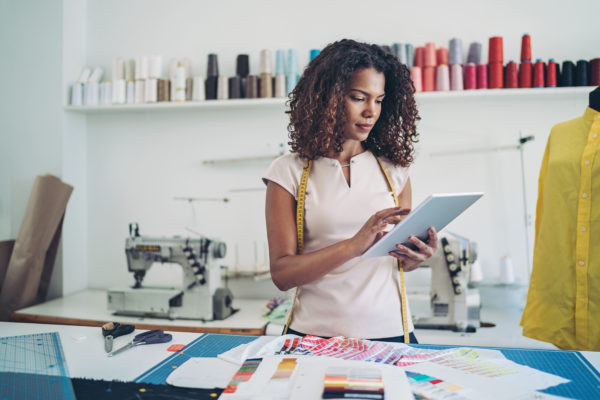
Lauren Bertrando: Yeah, for sure. I think even talking about new product initiatives, I mean, we started talking, and obviously Delta is a company that is known for innovation. So the stuff that you guys work on and all your fabric treatments, the textile innovation is something that is of interest to us. So I think that’s also something that I’ve really found in reaching out in this network. Maybe it’s not for a job, but it’s for something that is related to what I’m working on in my current role.
Delta Galil works with a lot of different brands. Can you tell us a little bit about some of the brands that you’re personally working with?
Lauren Bertrando: Sure. We work with Tommy Hilfiger. We work with Splendid, which is a brand that Delta owns. And then, we have a lot of private label and manufacturing that we do for basically every brand you can possibly think of. Delta is known as a company that can really provide the full circle of everything, whether it’s fabric innovation, manufacturing. Obviously, we have our own retail stores.
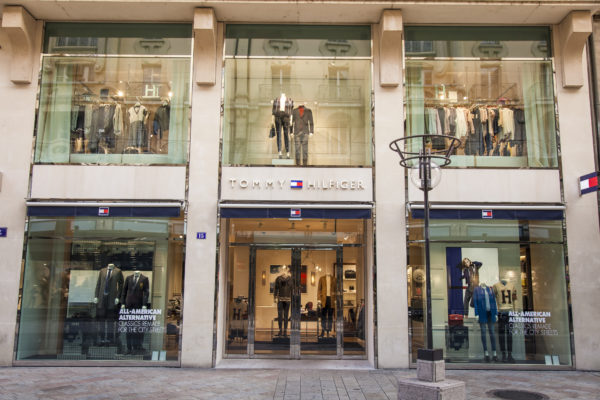
In Israel, we actually have Delta stores. They’re really known, for people who travel there, as the family underwear store. You buy your children clothes there, you buy yourself underwear, things like that. There is quite a variety of stuff that we work on and I think that’s really something that’s very unique to this company. You get exposure to literally every retail you can think of as well as the brands that we work on all over the world. So I have learned a ton in being here over the last four years and it’s been very different to working in a department store setting for sure.
Steve Cunningham: Yeah. It’s really interesting. In our initial conversation, I wasn’t aware of those stores in Israel and how popular it was there. So that was a really interesting thing to learn in our initial conversation.
Lauren Bertrando: Yeah. When you’re in the US, if I say, “I work for Delta,” they’re like, “Oh, the airline?” But if I clarify, they’re like, “We know Delta. I had my underwear just come here.” So it’s totally different, for sure.
Steve Cunningham: Absolutely. Let’s talk about the design and development process a little bit. You foster entrepreneurial environment among your team, enabling them to create original and on-trend collections to help drive sales. How do you do that?
How do you encourage your team to stay innovative?
Steve Cunningham: How do you encourage your team to stay innovative, instead of leaning into some of the habits they’re used to, or the tried-and-true that they’re used to, whether in their current role or just throughout their career?
Lauren Bertrando: I think the last, I don’t know, we’re working on two years here now almost of tumultuous environment, we’ve really had to just figure it out as it comes. I think some of that is really knowing your customer, loving the customer for who they are, whether it’s not your personal style, or whether you think it’s dated, or whether you think it’s weird. I think that that’s something I’ve really learned about embracing the customer you have, and that enables you to figure out, “Okay, they bought this. Maybe they would try that in a small way, and let’s give it a shot.”
I think the old school ways of like, “Let’s repeat last year. We’ll do a new color way of the same thing.” That’s pretty much over because back in the day, when, again, you went to your local department store in your town and the offering was the offering, if they didn’t have a shirt you liked, then that was it. We say the world is at your fingertips and the customer is very savvy. They’re smart. They can go elsewhere.
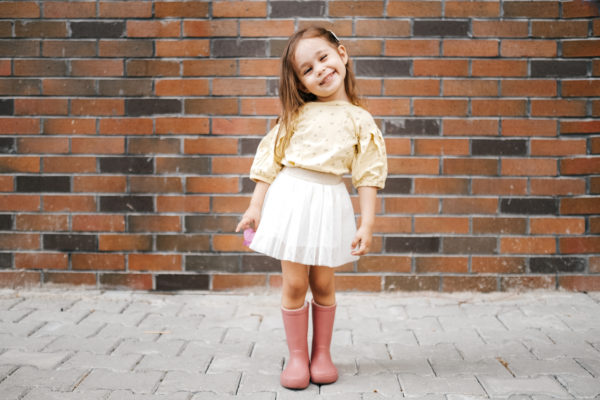
So you just can’t sit on your laurels anymore and wait for them to buy the same shirt over and over.It just doesn’t work. I think, especially now, things move much more quickly. When you see a trend, you have to hop on it. It’s not as in the past where you could say, “Okay, we’ll do that in six months.” Someone’s got it out there now. So how do we move? How do we get it going? I think is really important.
I think, also, now we have a lot of technology and ability to do things more quickly without the sampling process. People are especially now having moved to much more digital formats. I mean, we used to have four markets a year where you came in, we showed you physical samples of every single color, and that’s gone. I don’t know if it will come back. We have not really had anyone… Very few people that come back in our showrooms these days. That’s really given us some really great flexibility because you can change something on paper pretty quickly.
I’d find a bunch of samples to make for you in a day. I can’t do that. That has really enabled us to make quick changes, to pivot if something’s not working. It has just allowed us a whole new world of doing things. Also, I think, again, we all talk about the impact on the environment that we have as an industry. We threw those samples out, or we donated them. Sometimes they were cut. They were waste, basically.
Now we don’t need to do that. You can see it. We have other technological innovation to do 3D if that’s really something that is needed for that particular garment. We don’t have to start making all of this stuff, I guess, is really the benefit.
Steve Cunningham: Absolutely. One of the things you said, I mean, you said a lot of valuable things there, but one of the things early on you said is about focusing on the customer. And we talk about that in our business. I mean, we’re B2B, but in B2C specifically and even more emphasized. Being obsessed with the customer is something that we always talk about, because, ultimately, they’re buying.
And so, what do they need? And reverse engineer it back into our products. Because the consumers now just have way more buying power than they probably ever have. Their influence on what brands and retailers are doing, I think is probably at its highest level it’s ever been.
Tell us about being the on-air brand ambassador for Splendid on QVC.
Steve Cunningham: You’re the on-air brand ambassador for Splendid on QVC. You raise brand awareness, creating selling strategies for live television on exclusive product. That sounds like a really fun gig. Can you tell me a little bit about that?
Lauren Bertrando: Yeah. When I started working at Delta, obviously, I had no idea. The people that you see on air on QVC, a lot of them work for the brands. They’re not actors. They’re not paid talent. They’re people who actually either designed or developed or had some hand in the product. And so, when we started selling Splendid on air, obviously, we needed someone to go on. I’m actually from Philadelphia.
The QVC headquarters is in West Chester, Pennsylvania. So it made sense closest person to the studio to be there. What’s really amazing is, again, speaking back to the customer. They are so customer centric and they have so much going on. When you go there, it’s like Las Vegas. It never sleeps. If you’re there at 2:00 AM for a show, or you’re there on Christmas day, it’s all buzzing and working and moving.

You do a lot of training to make sure you’re comfortable really just being on air, understanding the nuances of how they work. But really, the great thing about it, and when I tell people that I do that, they’re like, “Oh, aren’t you nervous?” I said, “Well, not really,” because once you do it, you’re speaking about the product that you’ve made, that you care about, and you’re not reading off a script.
If I was doing a sketch comedy show, I would get nervous. I don’t know anything about that. But I know a ton about our brand and what we stand for, and the product that I’ve made. So it really makes it an easy conversation. The main hosts that are on that show are just so professional and amazing. Even if you stood there like a statue, they could dance around you and make it look like that was what was meant to be.
They do such an amazing job of making it seem so effortless. And it really feels good to be able to go and sell product that you really are passionate about. So it’s been a fun experience. We’ve moved to digital. Whereas I used to pace the showroom in the back, I now pace my own living room waiting to go on, and make sure hopefully nothing goes awry with all of my equipment, or the cat doesn’t jump on the table, or some other thing that happens.
But I think the customer also there really enjoys, one, the experience, and, two, feeling like they have a connection to the people that are selling the products. That has actually been a benefit, and being able to see my living room and see where I’m at and give me that more human side. I’m not standing on a stage anymore. So I think that they’ve seen really a benefit to that because people want more genuine experiences and people, and they can see fake things very easily.
Steve Cunningham: Yeah. That’s one of the things that I think have stood out during the pandemic. I mean, we’ve all been on zoom meetings and Teams and all the virtual meetings. One of the good sides of it is it’s really brought the human element into it, as you said. Even with your colleagues that you thought you knew well, their kid walks into the camera or their pet comes in, it starts a different conversation that’s light and fun. And I think people really have come to appreciate that.
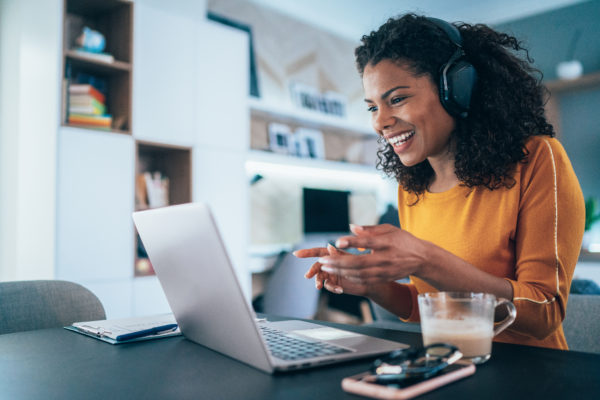
Like you said, being actually part of the brand and the company behind it, I think adds a ton of value when you’re going on QVC. I wasn’t aware that all these people from the brand doing it. But that makes complete sense because they can talk more passionately about it and more energetically about it without it feeling, like you said, walking through a script.
Let’s talk about collaboration across teams. This is something that I think we can all relate to.
Do you have tips you can share for how to best collaborate with sales and production teams when developing special product offerings?
Steve Cunningham: And one step further, how do you hit internal margin goals while maintaining the brand aesthetic?
Lauren Bertrando: No, yeah. That’s the battle there. We are really good on our team. I think everyone who is on my design team understands what the bottom line is, and that is we’re here to run a business. The way that we know we are successful is that we have products that is selling, we have customers that are happy, and we’re making those goals. So I think a lot of it just starts with really examining what we’re working on, who the target customer is, who the retailer is, what the price value is for the product.
I think in some places, again, you have a very high threshold, and that’s a wonderful place to be, where the customer has a high tolerance for a high ticket. And that’s great. I love designing product for that. But you also have people who $5 makes or breaks the difference. It’s clothing, honestly. What we’re making, I mean, other than basic underwear, when you’re talking lounge, when you’re talking active wear, you don’t need it. You could live with your old shirt that you’re wearing to bed or not.
So that that can make or break someone’s budget, and it’s just not going to be palatable to them to start raising the ticket $10. They’re done. They put it back. I think in knowing that, we have to make sure that we are offering things that we know are palatable, and not reducing quality to a point where it’s a cheap garment. I think, especially now, and everyone who’s in this industry is probably beating their head against the desk right now. But the cost of raw materials is up, electricity is… This and that, every single thing.
So sometimes it’s just pivoting. We’ve gone to doing some more synthetic fabrics in places. And luckily, we’re able to make it feel cotton handed, but not be cotton, when I should have started a cotton farm apparently 10 years ago and I, well, I didn’t. So things like that, whether it’s changing the detail so that maybe it’s a color contrast and it’s not an embroidery anymore, but it still looks like something.
Especially we know in particular places, they like things that really look like we’ve put a lot of stuff on it. But how do we make those things look valuable? That does get challenging. Especially now, I think, with everything being really volatile, it’s hard to know where we’re going to go to let that go now. I mean, prices fluctuate every day for fabrics. Again, I think our company has been very proactive in trying to see the future there, take positions on things to get ahead of it, try to really be cognizant of what is going on in the world and trying to react accordingly.
But we can’t always do that. I think so that’s why the partnerships come into play with your production team, with your sales team, of what we want to really focus on and what is valuable. And also then letting go of things that can’t be done. That’s what we really learned this year as well. You just let go of it. We love this. It’s awesome. But you know what? We’d have to sell it for $90, and the customer’s just not going to pay that.
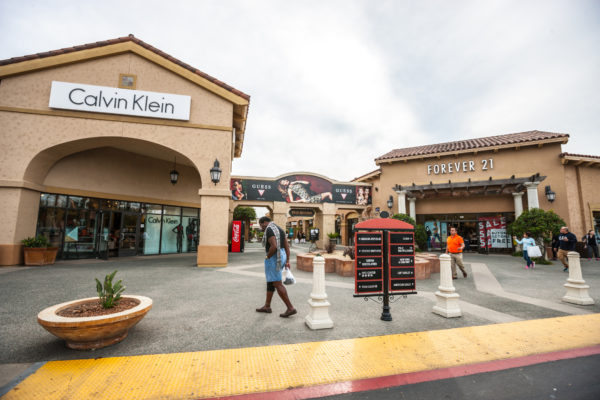
Maybe in a year, maybe in another brand, maybe at another time, whatever, we can revisit it. But it has to be moved on from. I think that’s what we’ve been really good at, being flexible, of really creative problem solving. It’s not just being creative. I think people perceive design roles as like we’re sitting around spitballing new ideas and reinventing the wheel. And we’re not doing that, at least not in the companies I’ve been in. We’re really trying to solve problems, to figure out what the customer wants and how we can give it to her.
Steve Cunningham: That’s great. And so, within that process, is it more just talking about the collaboration between teams, the sales teams coming back from retailers or maybe wholesalers and saying, “Hey, this is what we think needs to happen.” And then the innovation and production teams are trying to then implement that, while also looking at the internal cost structures and everything? How does that balance when the ideas are getting kicked around and you’re looking at options? How does that balance out between the two teams?
Lauren Bertrando: Well, I think for design, we have a pyramid. That’s how I look at it. We have hardcore stuff that we know is going to be every day. We call it same but different ideas where you’re tweaking something pretty minimally. It looks refreshed but it’s not new. And then, what we have is push pieces. That’s what I call it where, this may not go anywhere. We’re going to try it. Maybe it’s a year ahead of its time, or maybe it’s a failure. Who knows?
Our production teams are also really great at saying, “Hey, we’re going to start sourcing some new factory opportunities different places. So let’s get together some ideas that we think we’re going to give to this or that person in a new area of the world.” I think we are really flexible now with seeing where we can produce product and all partnering together to figure that out. And so, it has been challenging. You can see, in big global brands, trying to talk about buying their own fleet of ships and crazy things that are going on.
It’s a sign that people are really trying to think out of the box of how they can be successful. I think, in many ways, a good thing. We have had so many benefits from the difficulties that have come out of this whole thing.
Steve Cunningham: Yeah. I mean, we’ve all been forced to adapt, whether it’s the way we’re working, or logistics. The last year, year and a half has really shown us that we have to adapt. And a lot of companies have really embraced it, I feel, because you didn’t really have any other choice. It’s created some efficiencies and it’s created some challenges. But we all work through it and do the best we can.
And so, the market in general is fiercely competitive. What do you see as maybe the top three features that best helped sell your products going forward? Maybe those features are different for each product, so maybe you can give me an example. But what do you think would set you guys apart to help sell products for Delta?
Lauren Bertrando: I think there’s a lot to be said for innovative products. I mean, and we were talking about the stuff that you guys do. For instance, back in the day, my average day was waking up at 4:30 in the morning to commute into New York City for the day, which was really fun. And then I didn’t have to do that anymore. And so, I started doing this new thing called going to the gym in the morning.
Steve Cunningham: Oh, nice.
Lauren Bertrando: Now I have all these sweaty clothes that, dare you accidentally leave your gym bag in the car overnight. So something like inner active wear brands, the odor reduction, people are working out more than I think they ever have. They’re constantly washing their clothes. Sometimes you just can never get that smell out. I mean, let’s get deep into it here. But you throw your shirt out.

So instead of doing that, you can maybe pay a little more for something that is going to help you with a life need, I would say, is really what people are looking for. Okay. I paid another $15 for this tank top, but I just threw out five tank tops that I can never wear again. So I think that that’s really a huge feature that people are looking for, is things that are going to perform and give them added benefits.
Of course, secondly, if you want to go for top three things, price does always come into play. But I think it’s educating people on maybe buying something a little more expensive that is going to be more worthwhile. I think also then, third, is getting into… People are becoming much more aware of what they’re doing to the environment with the products that they’re buying.
I think those are things where maybe they’re not right this second, people are still buying a $10 shirt at an off-price channel store, but it’s now in the consumer awareness. I think those are things that are going to build in the future and things we need to start really focusing on.
Steve Cunningham: Yeah, absolutely. I think that also ties into their buying power. As they become more environmentally conscious, they’re going to make different decisions when they’re purchasing their garments. As you said, we do the anti-microbial and anti-odor technologies. A big part of that marketing now is you can wear your shirt or your clothes longer. You can go to the gym and then you can go out to lunch with your friend without changing and still smell fresh, extend your garment’s life a little bit.
And if you’re not washing as frequently, you’re saving energy, you’re saving water. So they might be small victories here and there, but they add up. I think those are the things that the consumers are really starting to care about.
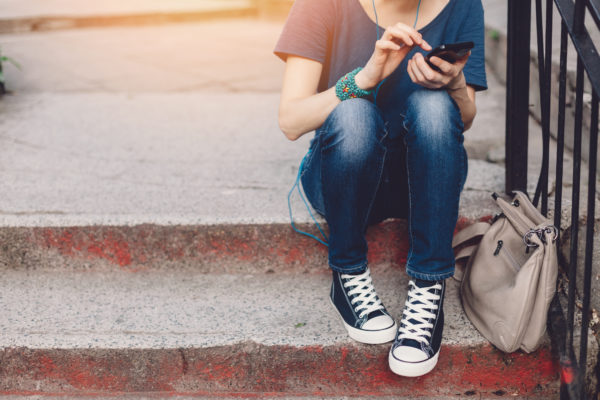
Lauren Bertrando: Yeah, and it’s not easy to do.
Steve Cunningham: No. No, not at all.
Lauren Bertrando: That’s the issue. It has not been easy. It was interesting because I actually started purchasing like a new food delivery service. When it came, I mean, it’s loaded with plastic trash and it bothered me that, oh, now I’m going to start throwing out all this plastic every day. I actually follow them on Instagram and someone was complaining about that. Actually, I commented in response, “Listen, I know that’s really hard to do. I’m going to trust and stay with you to know you’re going to work on fixing this problem.”
It’s not so easy to say, “Okay, now we’re going to be 100% sustainable.” Well, how? You’re shipping it on a diesel truck in the end.
Steve Cunningham: Exactly.
Lauren Bertrando: So is that sustainable? So I think that’s hard for companies. Even a company as large and as innovative as ours, trying to touch every aspect of the supply chain to make sure that you’re being “sustainable,” it is not easy. Props to everyone who is making strides in that arena and trying to really be sustainable. It is hard. The bigger you are, the harder it is, I think, because there’s so many aspects of your business that are not green at all and are very detrimental to the environment.
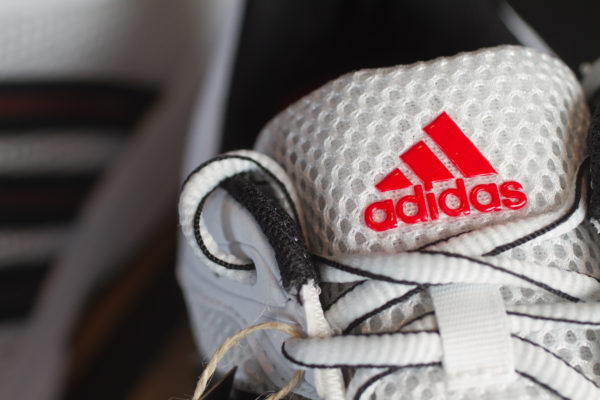
Those technologies, as they scale, get cheaper. But now they’re not. I mean, it’s like when you used to look at the catalogs that would come and flat screen TV was $25,000 and you thought, “I will never have one of those.”
Steve Cunningham: Right. That’s always the most interesting example because they’re so cheap now compared to what they were.
Lauren Bertrando: I remember being a kid and being like, “I will never have one of these. I’m never go to be rich enough for a flat screen TV.”
Steve Cunningham: This is the greatest luxury in the world.
Lauren Bertrando: Look at this thing. And then, here it is. But it’s the same, on a much smaller scale, for clothes.
Steve Cunningham: Of course.
Lauren Bertrando: If I do a recyclable tag, that you’re throwing away one way or another, I’m adding 10 cents to that garment. And then that has a snowball effect on the price of the overall garment. No one cares about the tag really. I mean, they appreciate that it’s recycled, but if I had told them, “Well, that means you have to pay me more for it, they would be like, “Come on. That’s ridiculous.” So it’s a very tough thing. I think people have made, again, a lot of improvements on it. There’s a ton of room to grow, but we’re trying.
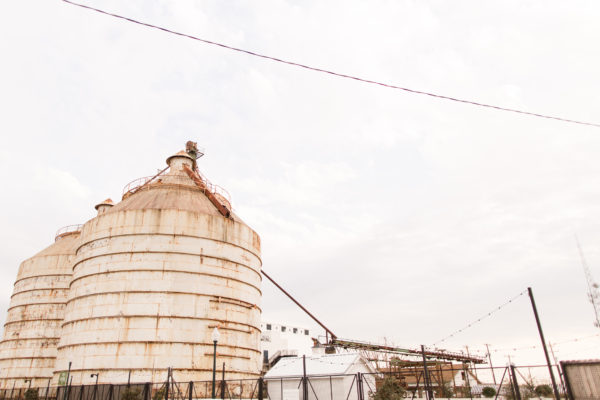
Steve Cunningham: Yeah. I think it starts with the companies having goals, and for sustainability in achieving them. But like you said, there’s a lot of work behind making that happen. It’s small steps, and technology needs to catch up. Everything needs to scale so the consumer’s not getting really impacted by it. I think you saw it when all the organic foods started to come in and people were like, “Yes, I want everything organic, but oh, I don’t want to pay that much for it.”
It takes a while. As the consumer starts to push the narrative, “No, I do want this and I will pay for this.” Then things can change and happen quicker. It all works together. But as you said, for a large organization, it’s not a light switch. It doesn’t just switch over easily. But as long as the commitment’s there and you’re working towards it, that’s what I believe is most important. It’s no secret that we are in a pandemic. I’m sure you’ve heard that.
Steve Cunningham: Maybe you could talk a little bit about the impact from your perspective that the pandemic has had on the industry. We touched on a few things there, logistics and things like that.
How have you and your team at Delta Galil had to pivot during COVID?
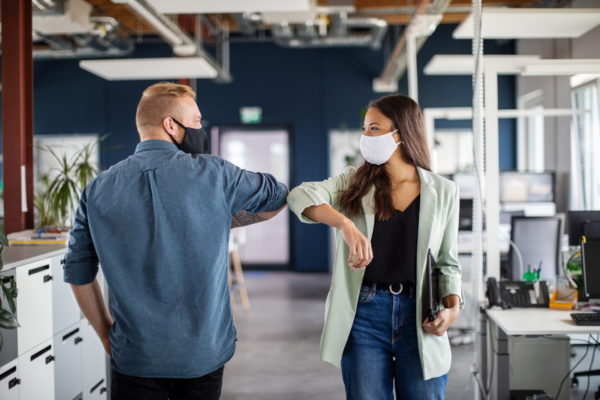
Whether it be processes, organizational structure, just any insight into how you guys have had to adapt, and maybe lessons learned and just successes.
Lauren Bertrando: I think it was interesting. At the beginning, when we look back now, at the sheer panic that this industry immediately… I mean, it took a day, I feel like. There was a day where it just shifted, and actually, you have that whole… Maybe this is me being old, although I wasn’t alive for this. I was in my classroom when JFK was shot moment where you think back to when you remember that really becoming a thing.
We actually, my husband and I, were on vacation in Jamaica, which we had vacillated on whether or not we would even go because you’re starting to really hear it. You didn’t feel it. Physically, there were not people that you knew were sick yet. You were just seeing hype on the news, is what it felt like, I guess. Over time, we were sitting there and it wasn’t really impacting Jamaica at all. We were having a good time. But every day I’m getting news alerts about this or that. By day five, I thought, “Is the world collapsing here?”
Steve Cunningham: We’re really dealing with something here. Yeah.
Lauren Bertrando: “Are we having a crisis?” We flew back into the airport and that’s when really it looked like an apocalypse. There was no one, there. There were two people, “Welcome back.” I was like, “Should I be welcomed back? It seems like this is not good.” And then, stupidly, it took a minute for me to really process, “Now, wait a minute. We’re closing all these retail stores. Our business is in jeopardy.” It was a moment a light bulb went off to realize, “Wait a second, this is really serious.”
Right or wrong, and no one could predict the future, obviously. But there was an immediate correction. We started furloughing people madly. There was panic. There was all kinds of craziness. For our particular businesses, and very luckily so, they stayed more stable than we had predicted. People still wanted underwear. People started working out in their homes. They had nothing else to do. They were lounging around in pajamas all day.
That started to really not go away. And then we started realizing, “Oh, wait a minute. We have all these things we now need to do.” All of those retailers who immediately called us, “Cancel everything. The world’s over.” Weeks were then like we were trying to chase things down that we had canceled. We were trying to ramp back up. We were trying to get people back. It became very chaotic for several weeks.
I mean, we have the license for Spalding active wear, which was something that we had signed, at the time, you would say poorly timed in January of 2020, and then the pandemic hit. I think it’s actually been a blessing because we’ve been able to do a lot of different things now with different teams and just… We held on what we were going to do. It maybe came a year later, but I think it actually was better. But we launched that really to new accounts with no team.
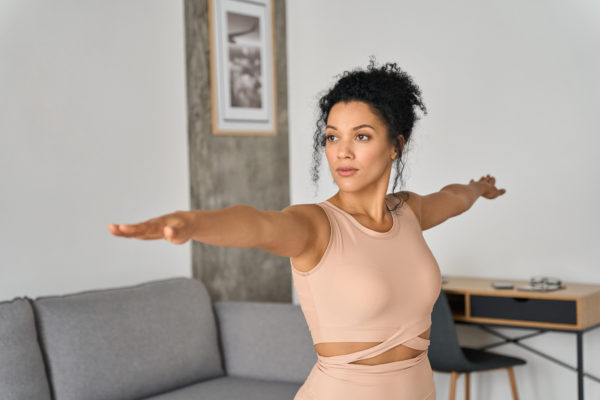
I mean, we had furloughed everyone, so me and one other person scrapped it together and it worked. Then we brought people back and it was great. It’s grown since and been really, I guess, the right place, right time. But it was just living in uncertainty and just doing what needed to be done. I think as leaders, for me, it was really great to just solve the problem that was in front of me. We no longer had these structures. We didn’t have all these meetings in a boardroom anymore. It just all became very organic, “Here’s what my day is going to be. I’m going to live for today, do the job that I need to do today, and then whatever happens, happens.”
I think that has really made people, for my team, actually, I think more creative, scrappier, able to handle change better. It’s interesting because I always find it a little strange that some people in our industry haven’t embraced a hybrid work environment, and have been very militant about coming back five days in a chair and all this stuff. My team being able to work flexibly has just been life changing for everyone. I would say our product looks better. People are happier. I don’t see a downside to it.
We collaborate when we need to in our office. People come in a couple of days a week. But then they’re able to quietly work at home. They’re able to take their dog for a walk in the middle of the day, pick up their children. Everyone has really benefited from that. So I think, if anything, that has made one of the most major impacts on our industry in terms of working.
Steve Cunningham: That’s such great insight because I think, in some ways, it’s given companies an opportunity to connect with their employees in a different way. So by embracing that flex schedule, maybe when it’s not needed anymore, one, you’re giving a little bit more work-life balance back to your employees, and showing that you care about that. Also, there’s this trust that comes with that. “You have a working from home. You’re doing a great job. We trust that you can do it. Continue to do it, if that’s what makes you happy.”
For employee company relations, I think it’s an interesting offset of everything that’s been happening. I’m one of the people that went remote and was doing great. I have kids and they have schedules and it’s allowed some flexibility for me. I continue to work from home and that’s something I appreciate that Sciessent trust me to do that. I have the flexibility to do my job that way.
Lauren Bertrando: Yeah. I mean, I, again, my lifestyle was living in Philadelphia and commuting to New York five days a week. I did that for 13 years.
Steve Cunningham: Wow. That’s a long time.
Lauren Bertrando: Now I look back and think, “Wow, I really wasted a lot of my life. Why was I doing that?” Because it was unheard of, “I’m going to take my computer, work from home.” “Well, you must be laying on your couch, taking a nap then. What stuff are you working?” And so, for me, now that is something … Again, even in the future, if I were to work elsewhere, would be something I would be interested in because I do get that time back. I’m more refreshed. I’m not exhausted.
Every winter season, we’d always play the snow game, when there wasn’t enough snow not to go to work in the morning, but then there was too much snow to leave.
Steve Cunningham: Yeah. Yeah.
Lauren Bertrando: Because you had to drive an hour away and it became dangerous, but you did it anyway because God forbid you weren’t in the office. That has been so good for people, and for us, I think, as creatives. I don’t want to work fully remotely, mostly because, I mean, over the pandemic, my house became the atelier of samples and boxes.
Steve Cunningham: Oh, I’m sure.
Lauren Bertrando: And stuff, that became very unmanageable. We spent a lot of time being the FedEx man, mailing things to each other and things like that. So it’s great now to be like, “Hey, I’m going to be in the office on Wednesday. Let’s review this sample,” and deal with it and then leave it there. People have liked that. I think in environments where, typically, in our fashion design industry, you’re in LA or you’re in New York. Your commuting time, even if you live relatively close to your office, is still very lengthy and arduous.
The trains aren’t running. There are 60-minute delays on New Jersey transit, all these other things that you don’t have to stress about. “It’s storming out. I’m going to stay home today. I don’t feel like walking in pouring rain to the office.” And that’s fine. Tomorrow you go in. I think it’s also given some other really great companies that are not in those hubs, a chance to access the talent that’s available in those markets.
Because if you are in a job that is able to be fully remote, then you can work in Omaha, Nebraska. It’s not a life-changing event to, you know, to pack your things from New York.
Steve Cunningham: Exactly.
Lauren Bertrando: And vice versa, even if you want to have a quieter life somewhere. One of my employees actually moved during the pandemic to an area that’s much closer to me. She’s about 20 minutes away from me in Pennsylvania now. She doesn’t have to move back because she can come in two days a week, and she doesn’t have to live my crazy lifestyle of commuting every day like I did for so many years. It’s so much easier for her to do an amazing job and still be in a remote environment.
Steve Cunningham: That’s also an excellent point. It allows companies to have a greater talent pool, if they embrace it, and also allows people looking for jobs to maybe chase their passion a little bit more if they could work remote, which opens up new avenues for them to pursue in terms of employment. That’s an interesting angle at it.
What changes are you seeing on the wholesaler and retailer level?
Lauren Bertrando: I mean, I still don’t know what the full change is going to be from people shopping online versus in store. You can see a million reports. There’s data every which way to tell you where people are shopping. Obviously, people are shopping online, for sure. And that definitely increased during the pandemic. But I think there is still an element of people wanting to go to stores, the dining mall that we all think is the apocalypse for the industry.
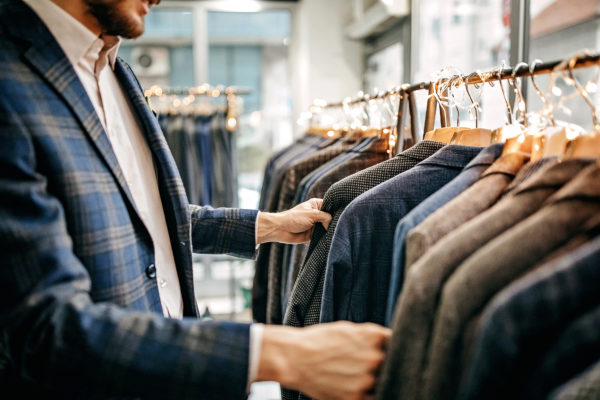
When you really look at some of those places, they were dying forever and no one wanted to solve the problems. The places that are thriving, whether it’s mixed use space, you have to start building some condos. You have a gym next to it. You make an environment for people to go to. I’m in Philadelphia, so our major mall is King of Prussia. You see all the stuff that they’ve added near there. There’s a whole community that’s a couple blocks away.
Those people walk over to the restaurants. They probably pop in to shop. They’ve invested in making it a beautiful space, a place you want to go to. So, to me, those places will continue. Then you have the off-price retailers where the whole concept is the hunt, going in and looking for things you can’t buy it online. You want to see the one that’s left and get a good deal. Those places are thriving also.
I mean, I look at my own shopping habits, and obviously, when we were truly locked down, I thought I couldn’t go to the grocery store. So I ordered an Instacart and had someone go shop for me and bring me weird things. Always a caveat to shopping with Instacart is you got random stuff that you didn’t ask for. But then, over time, I liked going and picking out which banana bunch I wanted and not relying on someone to decide for me, if something wasn’t there, which item I would get.
I wanted to go back to the grocery store and do that myself. I wanted to go and just for entertainment, shop in a store. I wasn’t necessarily getting an item of need. It was more of an entertainment. People are being really smart about that, in some cases. You have what Sephora did with JCPenney. You have these alignments of brands that I think are really cool, that allow people to come back and have these cool experiences and buy the stuff that you want them to buy in the store anyway.
Steve Cunningham: Yeah. I think getting back into stores represented some normalcy for people too. We all had to start shopping more online than we did before. We just had to, to some extent. For me personally, with clothing in particular, it’s just something I prefer to see in person. I want to feel it. I want to touch it. I want to try it on. I think a lot of people are like that. They want to feel it. They want to touch it.
It’s just the experience of, okay, I just went through a year of being in my house so much and I want to get back to do something that’s normal and going out and buying my groceries or buying a new shirt. That’s normal to me and I need to do it, you know?
Lauren Bertrando: Yeah. I think perhaps we were oversaturated of things anyway. We didn’t need as many… Everybody was opening a store and there were five within a five-mile radius that you could go to. Maybe that’s the correction. You have one now. It’s a balance, and how do you draw me to that store with, again, entertainment, innovative stuff, new things that I want. I mean, I’m definitely someone who likes to try things on and look at things.
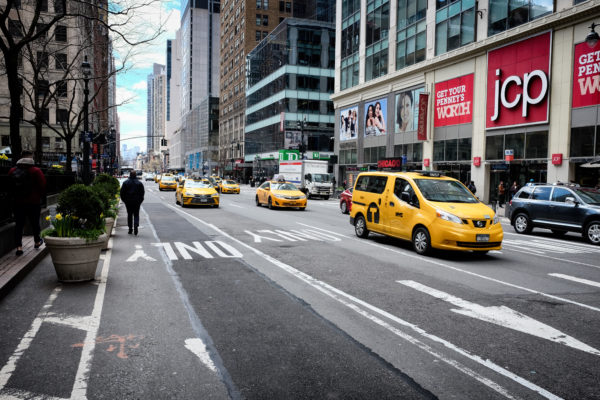
I personally hate, regardless of how easy it is, to return anything in a box. So it just sits around in my house and I look at it occasionally and think, “I’m going to go return that.” And then I don’t.
Steve Cunningham: That you end up donating it in a year.
Lauren Bertrando: Right. Then like a year from now, I find it. It’s got dust on it and back of my closet and I donate it. I think it’s just evolving. I don’t think it’s dead. I don’t think people are just going to want everything on their doorstep. I think, for some things, that has been really convenient. But again, going back to environmental impact and things like that, where you also get the boxes, so where you have a tiny little thing and in 10 pounds of packaging.
Steve Cunningham: Exactly.
Lauren Bertrando: That is also really off-putting. “Oh, I ordered this little thing online and look how it came. Now I just threw out all this stuff. I could have just gone and gotten it and not been lazy and done that.” I think also, during the pandemic, the support for small businesses, “Why don’t I go down to my main street in my town and find a gift for my friend, than cruise the internet and buy whatever is kicking off there?” I think that has also been a mentality shift of being a little smaller. Again, no offense to Amazon. I don’t think if I buy my friend a gift down the street, they’re going to go out of business. I think they’ll be all right if I vary my shopping a little bit.
Steve Cunningham: Absolutely. The human element and the families that are running small businesses, that came to life. But unfortunately, a lot struggled across different industries. But I also feel like consumers really try to embrace that and shop at small retailers. Within the pandemic, we know this on our side, and I’m sure you’ve seen a little bit about it. But antimicrobials in textiles is obviously a little bit more highlighted given what we’ve been through.
What is your opinion on the importance of antimicrobials in textiles in today’s world, given what we’ve gone through?
Lauren Bertrand0: Yeah. I mean, I think what we talked about a little bit earlier, like not understanding the concept of smell and bacteria, which I think all of us realized how dirty everything was during the pandemic. The fact that someone needed to put up a sign that told me to wash my hands, really started bothering me. Maybe I wasn’t doing it frequently enough.
Steve Cunningham: Don’t just wash them, do it for 20 seconds. And sing the song. When you’re done with the song, you’re good to go.
Lauren Bertrando: Wow, we’re really going back here to the basics, and that’s fine. I think people really started to acknowledge that, and especially now. Again, I think this will continue. I think mask wearing has become, for some people, a part of life. Maybe before you were going to get on a crowded train and even now, even if your vaccinated, whatever your feeling is, you’re like, “Wow, I didn’t get sick last year. I wore a mask on the train.”
But also I’m throwing that mask in my bag. I dropped it on the floor. I did all these things. So that then becomes very important to people, like, “Wow, this is something…” Again, what you guys do is not just like we spray some stuff on it and then good luck to you. It’s very innovative. It’s smart. It regenerates, is part of the inherent quality of the fabric. So I think that that becomes more important to people.
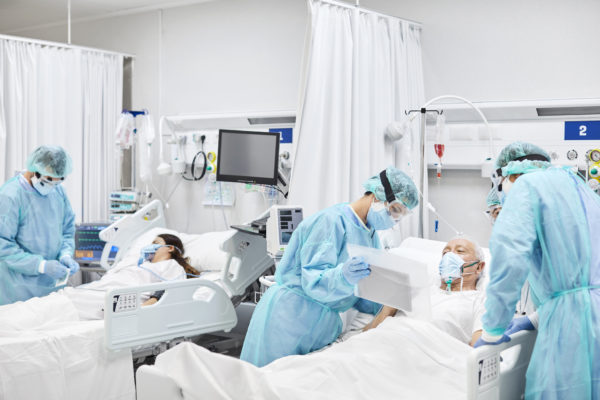
I think, again, we focused very much on our healthcare workers and things like that. And how do we improve their lives, and that when inevitably, and hopefully not soon, another pandemic, virus, something, or other, they have the ability to protect themselves and still care for us.
Steve Cunningham: Absolutely. Those people on the front lines are the ones that need it the most in it. We were involved in the government mass program, that they wanted to get everything out to the frontline healthcare workers. We were fortunate enough to be able to contribute to that. It’s such an important thing. We’ve seen it across different markets, whether it’s apparel or home textiles. There’s just been a really big uptick in the interest because people I think understand it better now.
What I say to people a lot of the time is, particularly around it to microbials, let’s say, if you talked to someone on the street two years ago and then said, “What’s an anti-microbial?” Maybe a few would know, maybe. But I think, as you said, we’ve learned a lot more about germs and bacteria and viruses through this. And there’s a greater understanding and consumer has a lot more knowledge about those things and also what helps combat them and fight against them.
So it’s been an interesting shift, as you have pointed on several times in this conversation. We all have to adapt. The consumer’s adapting, just as much as we are. But the different functionalities that we can put on these textiles, they matter. They matter for the consumer, so they matter.
Lauren Bertrando: Yeah. We learned a lot about germs.
What do you see as the biggest challenge for the industry as a whole?
Steve Cunningham: I’m sure Delta Galil had its own challenges within your organization. But when we look at the pandemic’s impact, my mind goes to logistics, just because it’s an obvious one. But where does your mind go?
Lauren Bertrando: I mean, I hate to beat the supply chain to death because I feel like now, I mean, speaking of things people know about, I don’t think the average person was ever really acutely aware of supply chain and understanding that things come from different places and then they’re assembled here, and then they’re moved there. Supply chain has become part of the common vernacular, which is very funny to me now. Like people actually know where things come from.
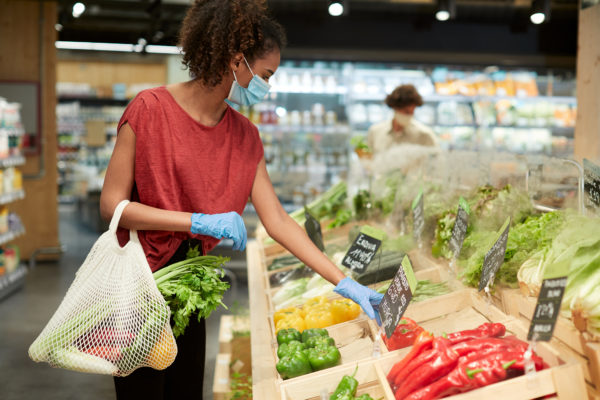 My dad called me this morning, actually, and said, “Oh, my phone died yesterday. It just stopped working. I went to the Apple store, but because of the supply chain shortages in the chip manufacturing, I have to wait a week to get a phone.” I was like, “How is this a conversation that we’re having right now?” And especially because people have been so trained in the last couple of years, of things arriving on your doorstep the minute you’ve ordered them.
My dad called me this morning, actually, and said, “Oh, my phone died yesterday. It just stopped working. I went to the Apple store, but because of the supply chain shortages in the chip manufacturing, I have to wait a week to get a phone.” I was like, “How is this a conversation that we’re having right now?” And especially because people have been so trained in the last couple of years, of things arriving on your doorstep the minute you’ve ordered them.
Steve Cunningham: I know.
Lauren Bertrando: I mean it’s like they surface. The consumer is shocked now. Someone might not get their Christmas present in time. We really scared everybody, but it is an issue. It’s funny how the world kept moving, but just these small little disruptions here and there, factory shutdowns. Even now we are having issues again. We’re not as fortunate in other countries to have people vaccinated and they’re working in closed quarters. This factory shut for a week for COVID. The government has come in and tried to regulate this or that.
Those little blips and interruptions snowball, and they get bigger and bigger and bigger. That’s what we’re facing now. I think it’s going to really take some people, hopefully some very smart people, to figure out how we can start trying to turn that around, because I don’t see it getting better in the near future. It’s not an easy correction like we say with sustainability.
Steve Cunningham: Not at all.
Lauren Bertrando: Even I think some people in our industry who are in certain niches and don’t understand really the global impact of everything they’re doing. Your average designer doesn’t understand this person is growing cotton in China. Then it goes here. Then someone selling it in Cambodia. Then, oops, the truckers are not working, so it sits there for two weeks. Well, then this happens and then it doesn’t get on a boat. All these things, people have really started learning.
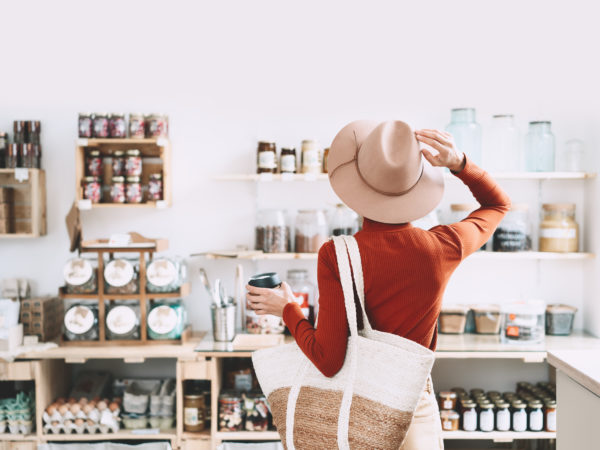
Again, I think supply chain gets said every single day of my life now. That’s the biggest challenge right now for sure.
Steve Cunningham: Yeah, and it’s not a quick fix, until you understand going from raw material to on the shelf. You walk into a store and take pants off the shelf or grab a shirt. You don’t really appreciate what it took for that to get there. Now when we see shortages of things, we’re like, “Well, it’s always been easy. We’ve always just walked into the store and got it. So I’m frustrated now that I can’t do that.” But until you really understand the whole backend of how it gets there. You can’t appreciate it.
Lauren Bertrando: I think there’s been a lot of, “Why don’t we just make it here?” Well, you can’t just build an infrastructure overnight, people.
Steve Cunningham: Exactly.
Lauren Bertrando: Even if I had a sewing machine, wanted to make you the shirt, I don’t have the fabric. So there’s too many connections in it now. It’ll be interesting to see, because I think that there is some thought around trying to maybe shorten that loop a little bit, I guess, if you will, as like maybe we could start manufacturing textiles here and then what would that mean? And okay, if it’s more expensive for labor, but then the freight’s less because it’s a shorter transit time. So people are thinking about those things, I think, for sure. But it’s not an overnight problem.
Steve Cunningham: Yeah. There’s the economics of it. There’s the infrastructure of it. There’s the scalability of it. I’m sure there’s plenty of ideas and options getting kicked around, but then they have to be bedded through all those different aspects to make sure that it’s not going to be a big disruption from a cost or design standpoint for the consumer.
What do you see as the biggest opportunity in our market?
Lauren Bertrando: I think it’s not necessarily a thing. I think it’s a mentality that we need to keep.
Steve Cunningham: That’s interesting.
Lauren Bertrando: And we need to ensure that we are not going to go back to our old ways of thinking and doing, because those were easier, and they were.
Steve Cunningham: Of course.
Lauren Bertrando: Two years ago, you went in, you did your work. Things shipped on time. There weren’t all these issues. But it’s better now, to me, in some ways, as a creative person anyway, because I really like being challenged, and that’s where you get the best new stuff. If we all sit here and do the same thing over and over, you’re not going to get that innovative product. You’re not going to get that new hot thing.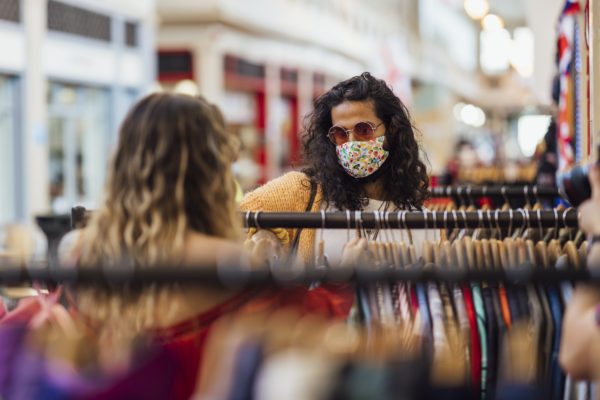
So I think it’s about keeping this mentality of just adapting, thinking. I think people are more receptive to ideas that previously you wouldn’t have even said in a meeting. Now it’s like, “Let’s hear it.” We’re throwing things at the wall to see if they stick.
Steve Cunningham: Put it out there. There’s no bad ideas.
Lauren Bertrando: If you got one, just throw it out there. So I think that that really helped. I mean, it really did. And I think that that’s what’s going to propel us forward as an industry because people now feel a little more free of like, there is no bad idea because when you have all these challenges, if one thing solves it, awesome. Let’s try it. We’ve run out of traditional options, so let’s go for it.
Steve Cunningham: Well, that’s the thing too, is that there was no blueprint for this. We are dealing with something that’s very unique in our history. Adapting to it now and developing immediate processes just to get through it is one thing. And then I think there’s going to be a wave of efficiency, like, “Okay, this is how we got through it. But how can we change our business or change our products so that we can maintain this efficiency, or be prepared at least if we have to jump into this again?” It’s going to be very interesting to watch that unfold.
Lauren Bertrando: For sure. Yeah. Again, who knows what’s going to happen?
Steve Cunningham: Hopefully we don’t go through it again. But we also have to be realistic.
Lauren Bertrando: Yeah. Only positive changes now. No, it is just being much more flexible, and that’s what we all need to be. I think that that brings about really positive change. That’s something that I’ve really embraced during this time.
Steve Cunningham: I love that answer. I think the mentality is an interesting way to look at it, and it’s so true. Is there anything else, for our audience, that you’d like to add? I mean, I think this conversation’s been great. I’ve really enjoyed talking to you. You’ve been really insightful and I hope we can do it again.
Is there anything that we haven’t touched on that you think would be interesting for anyone to hear?
Lauren Bertrando: Listen, I think, if someone’s listening to this and they want to get into the design field, I think this is part of what you really need to do to move your career forward, as we started at the beginning of this conversation. Listening to people who have had these different experiences, everyone’s path is going to be different. A lot of young people that I talk to ask me for, like we said, a blueprint for things. There isn’t one.
I think reaching out and getting information from people you don’t know… Everybody I always hear loves talking about themselves, just reach out. I think that’s where we can all really benefit as an industry in total, is from everyone’s collective knowledge, and insight, and experience. I think that’s really something that is valuable.
Steve Cunningham: Yeah. As you said at the start, we have more access to each other in so many different ways now than we ever have.
Lauren Bertrando: If you’re mid-career and you’re going crazy right now, someone is experiencing the same thing as you.
Steve Cunningham: Absolutely.
Lauren Bertrando: Someone has just been told that their goods did not make the vessel and they’re banging their head on the table as well.
Steve Cunningham: Absolutely.
Lauren Bertrando: You’re not alone. You’re not alone.
Steve Cunningham: No one’s alone in that nowadays. Lauren, this has been really great. I really appreciate all the time you gave us today and all the insight. I think it’s all been valuable and I’ve really enjoyed the conversation.
Lauren Bertrando: Awesome. Thank you so much for having me.